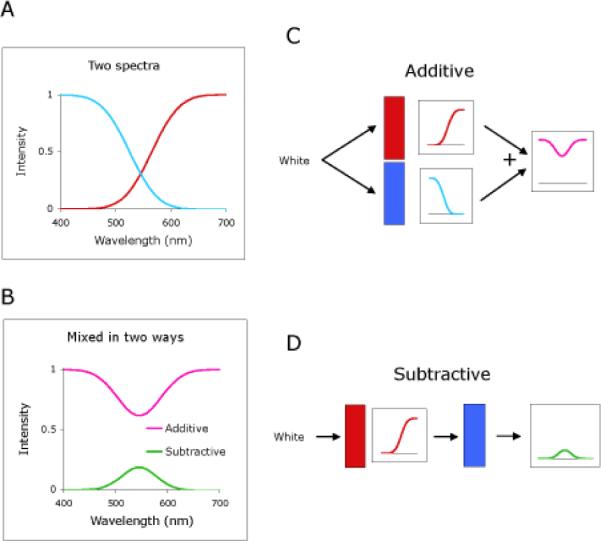Fig. 4.

Additive and subtractive color mixture. A. Two example spectra, containing either short- or long-wave-length light. B. The resultant spectra following additive or subtractive mixture are quite different. C,D. How this occurs can be visualized by considering appropriate filters. If these are placed in parallel, and the light from each filter combined, then the resultant is an additive mixture. If they are placed in series, the light from the first filter is filtered again by the second, and the resultant is a subtractive mixture.
